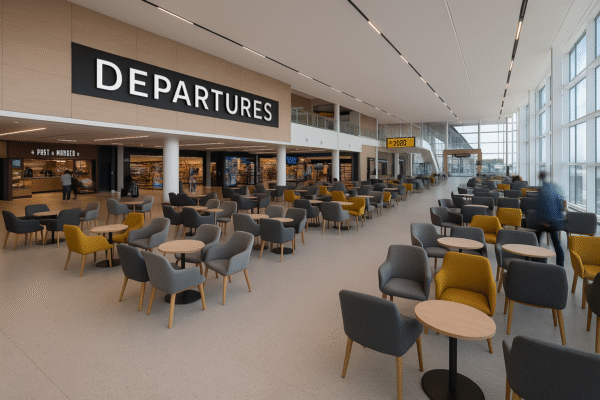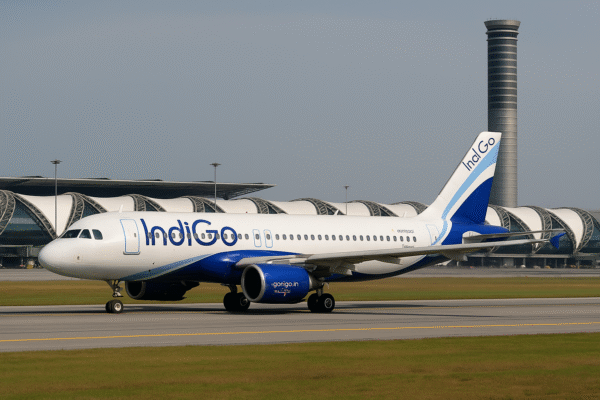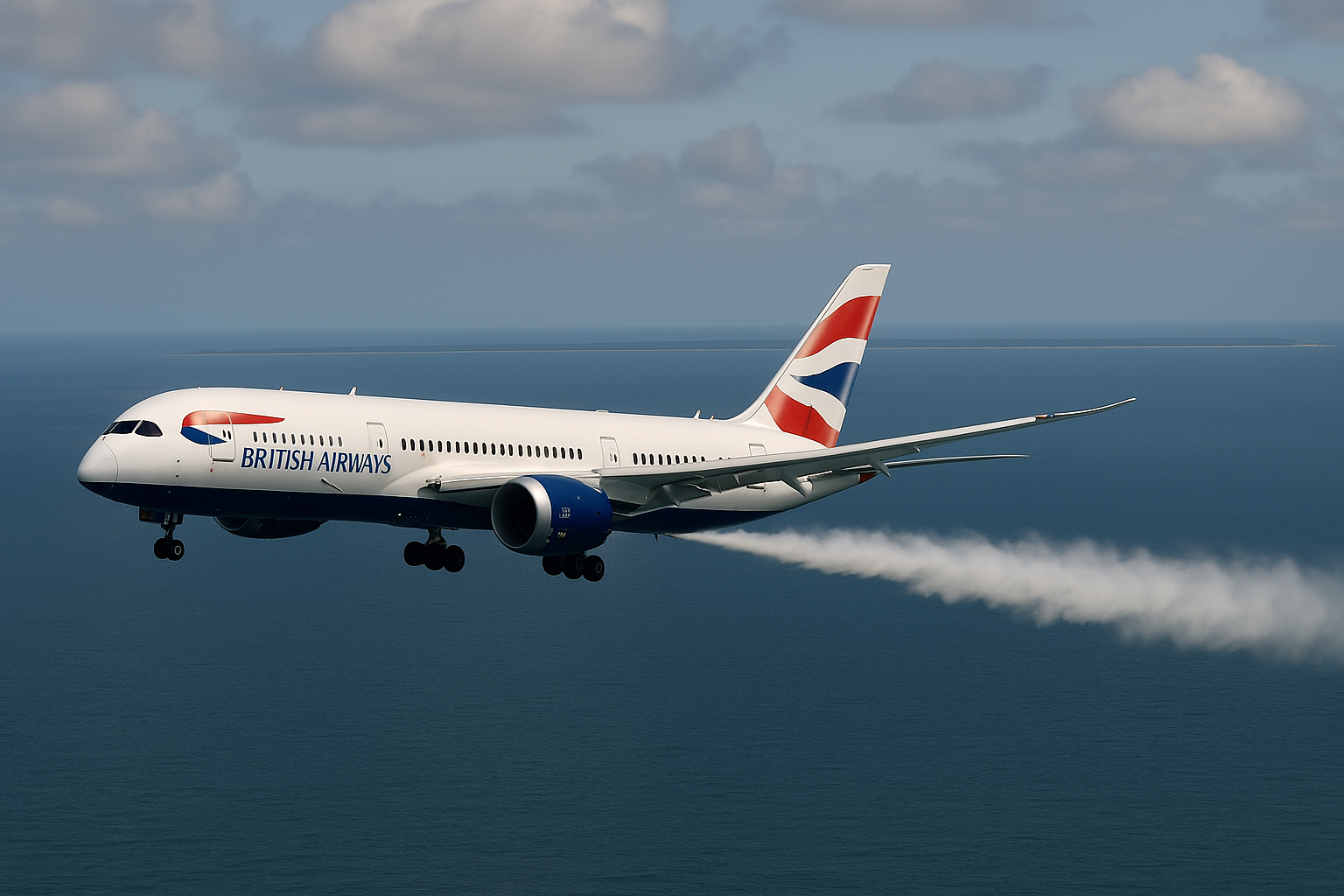In a concerning incident that disrupted a key air corridor between the United Kingdom and India, a British Airways Boeing 787-8 Dreamliner was forced to make an emergency return to London Heathrow Airport after suffering a critical flap system malfunction mid-flight. The aircraft, operating flight BA35 from Heathrow to Chennai, had only recently departed when the flight crew encountered a serious technical fault affecting the aircraft’s aerodynamic control.
Sudden Mid-Air Technical Malfunction
Flight BA35, operated by a Boeing 787-8 registered as G-ZBJG, took off from Heathrow’s Runway 27R on a scheduled long-haul journey to Chennai, one of British Airways’ primary destinations in India. The aircraft initially climbed without incident. However, at around 15,000 feet altitude, the flight deck received an alert indicating a malfunction in the flap system.
Flaps, located on the trailing edge of an aircraft’s wings, are crucial for controlling lift and managing airspeed during takeoff, climb, and landing. A failure of this system can significantly impact the aircraft’s aerodynamic stability.
After evaluating the malfunction and consulting with airline operations, the flight crew opted for a precautionary turnaround. Given the aircraft’s full fuel load intended for the 10-hour journey to South India, the crew had to perform a fuel dump to reduce landing weight.
Controlled Fuel Dump Over the English Channel
In line with global aviation safety protocols, the Dreamliner descended to approximately 12,000 feet and commenced a controlled fuel dump over the English Channel. The procedure lasted around 30 minutes, and while rare, is a recognized and safe maneuver in such situations.
This process is designed to occur over sparsely populated areas or bodies of water to minimize environmental and public health risks. However, the visible fuel stream from the aircraft triggered concern and speculation on social media and aviation tracker platforms, with many posting live updates of the flight’s unusual holding pattern.
Emergency Teams Mobilized at Heathrow
Upon successfully completing the fuel dump, flight BA35 returned to Heathrow and made a safe landing on Runway 27L after approximately 105 minutes in the air. Emergency response vehicles lined the runway as a precaution against potential brake overheating or hydraulic complications due to the unusual descent and landing sequence.
Fortunately, the Dreamliner taxied to Terminal 5, Stand C66, without further complications. All passengers were safely disembarked, and no injuries were reported. British Airways promptly issued a statement confirming the technical issue and commending the flight crew for their professionalism and adherence to safety procedures.
Impact on British Airways and UK–India Connectivity
The cancellation and turnaround of flight BA35 come at a time when the UK–India aviation market is experiencing high passenger demand, particularly during the summer travel season. According to the UK Civil Aviation Authority (CAA), routes between the UK and India have rebounded strongly post-COVID, with Chennai being a key destination for both leisure and VFR (visiting friends and relatives) segments.
British Airways, already operating at high summer capacity, faced logistical challenges due to the grounding of the Dreamliner involved. Passengers bound for Chennai were offered rebooking options, including alternate flights through Delhi or Mumbai and codeshare routes with partner airlines.
The airline is expected to temporarily replace the affected aircraft while engineers conduct a comprehensive technical review of G-ZBJG’s flap control systems. Boeing 787-8 aircraft, though relatively new and technologically advanced, have seen scattered issues globally related to electrical and hydraulic components, prompting strict maintenance protocols.
Passenger Reaction and Travel Industry Ripple Effects
Social media responses highlighted a mix of anxiety and gratitude, with several passengers praising the flight crew’s transparent communication during the emergency. Some expressed concern over the frequency of mechanical issues in modern aircraft, calling for greater scrutiny and transparency in airline maintenance procedures.
The emergency return also disrupted Heathrow’s already congested international schedule, causing minor cascading delays across British Airways’ long-haul services to Asia, North America, and Africa. Airport authorities temporarily reprioritized runway operations to manage the influx of diverted aircraft and emergency protocols.
What Fuel Dumps Mean for Aviation Safety
The incident has also brought renewed public attention to the rarely discussed practice of in-flight fuel dumping. According to the International Civil Aviation Organization (ICAO), such dumps are authorized only under critical safety considerations, particularly for aircraft that exceed maximum landing weight during emergencies.
While fuel vaporizes rapidly at high altitudes, reducing ground-level environmental impact, such events highlight the complex decisions pilots must make in real-time emergencies—balancing safety, environmental factors, and operational constraints.
A Wake-Up Call for Modern Aviation?
This high-profile incident underscores a key reality in aviation: even the most advanced aircraft require continuous monitoring, maintenance, and contingency preparedness. It also serves as a reminder to airlines, airport authorities, and regulators of the importance of robust safety systems and real-time coordination.
For India–UK travelers, the emergency return of BA35 is a reminder of how dependent global tourism and business travel are on smooth and uninterrupted air services. As aviation continues to recover from the pandemic and adapt to increased demand, ensuring aircraft reliability and operational resilience remains paramount.
British Airways has reassured passengers that safety remains its highest priority, and all affected travelers will be accommodated through alternate arrangements. As investigations into the flap malfunction continue, the airline is expected to review technical protocols and enhance preventive checks across its Dreamliner fleet.
For more travel news like this, keep reading Global Travel Wire






















